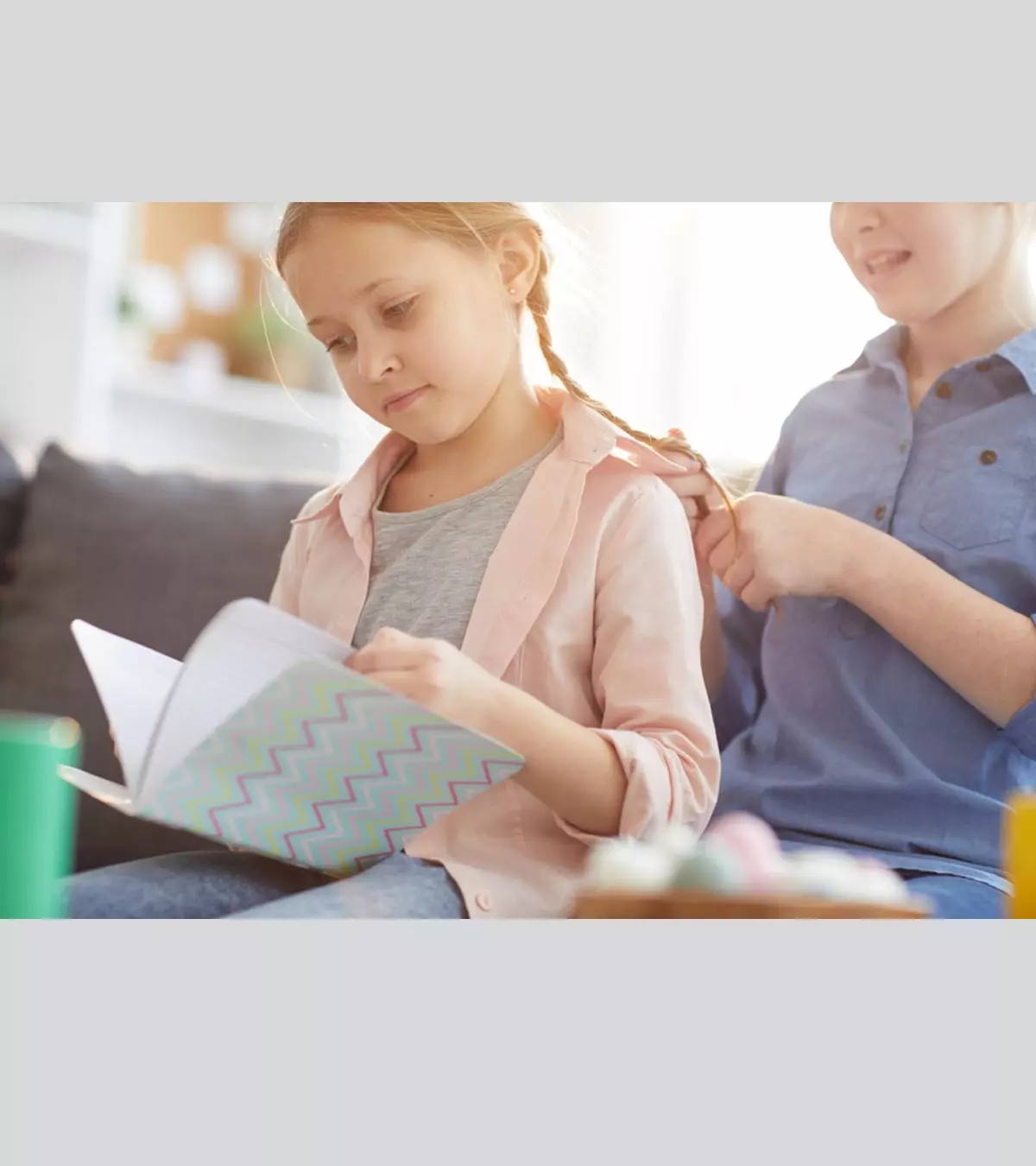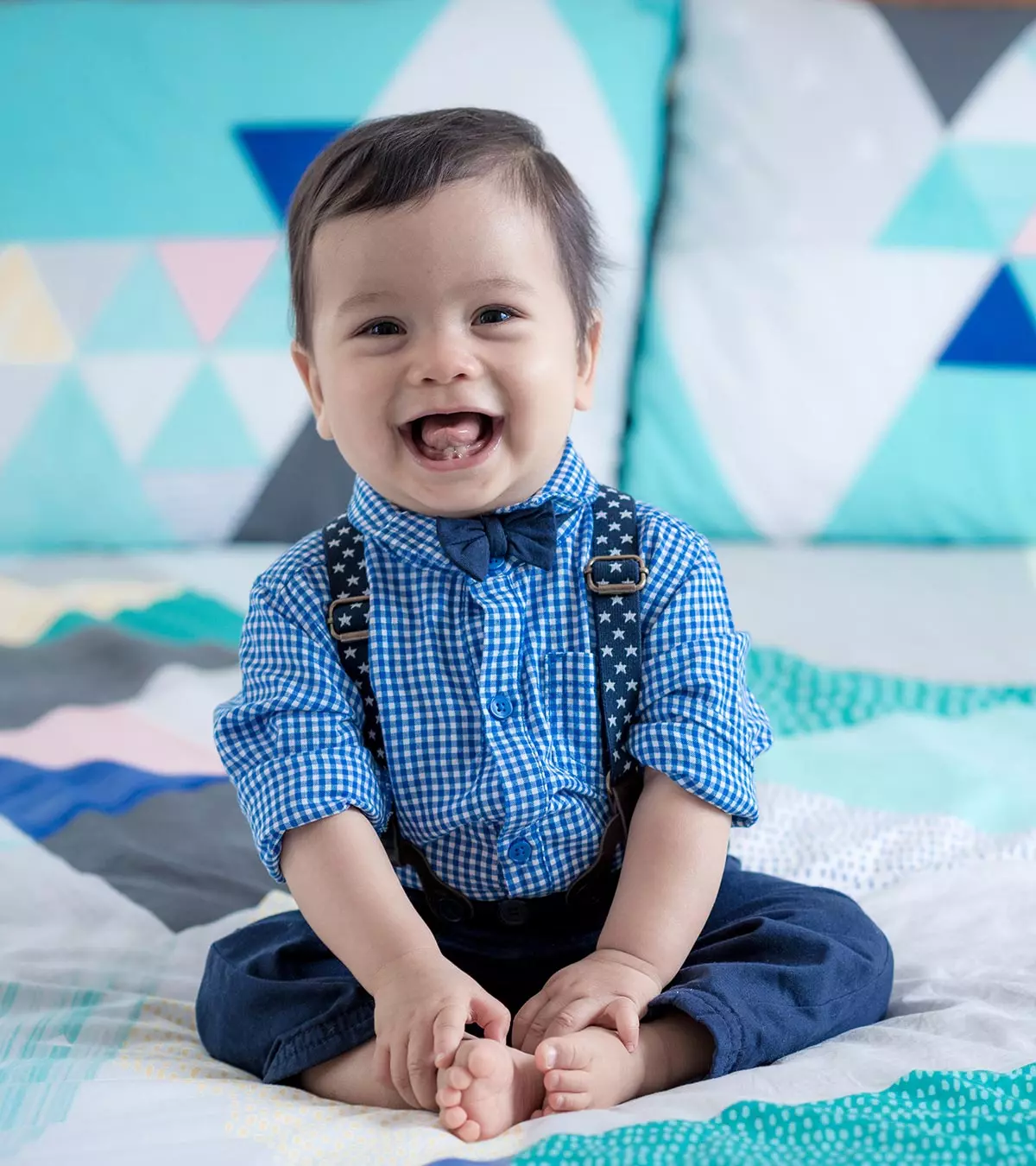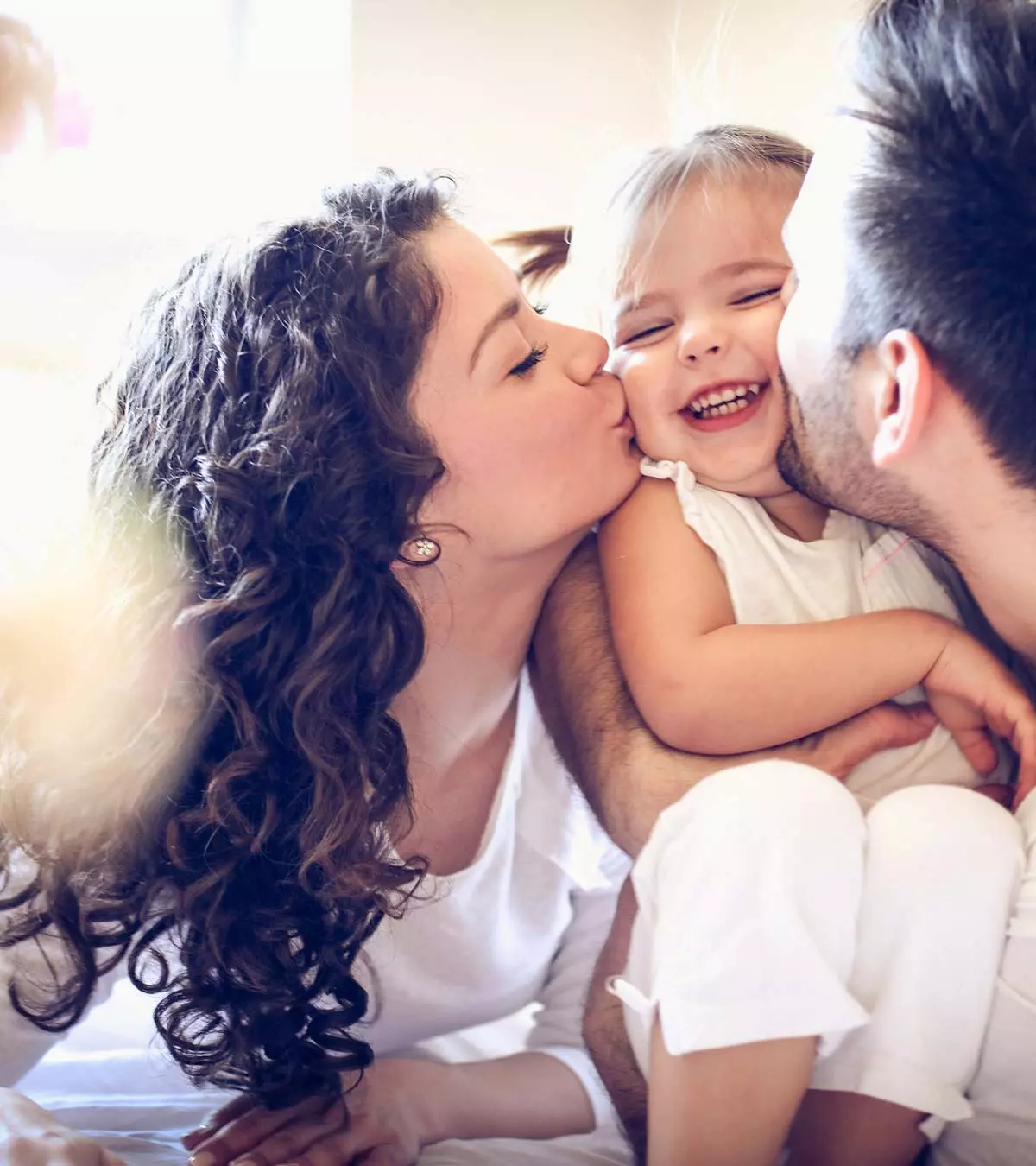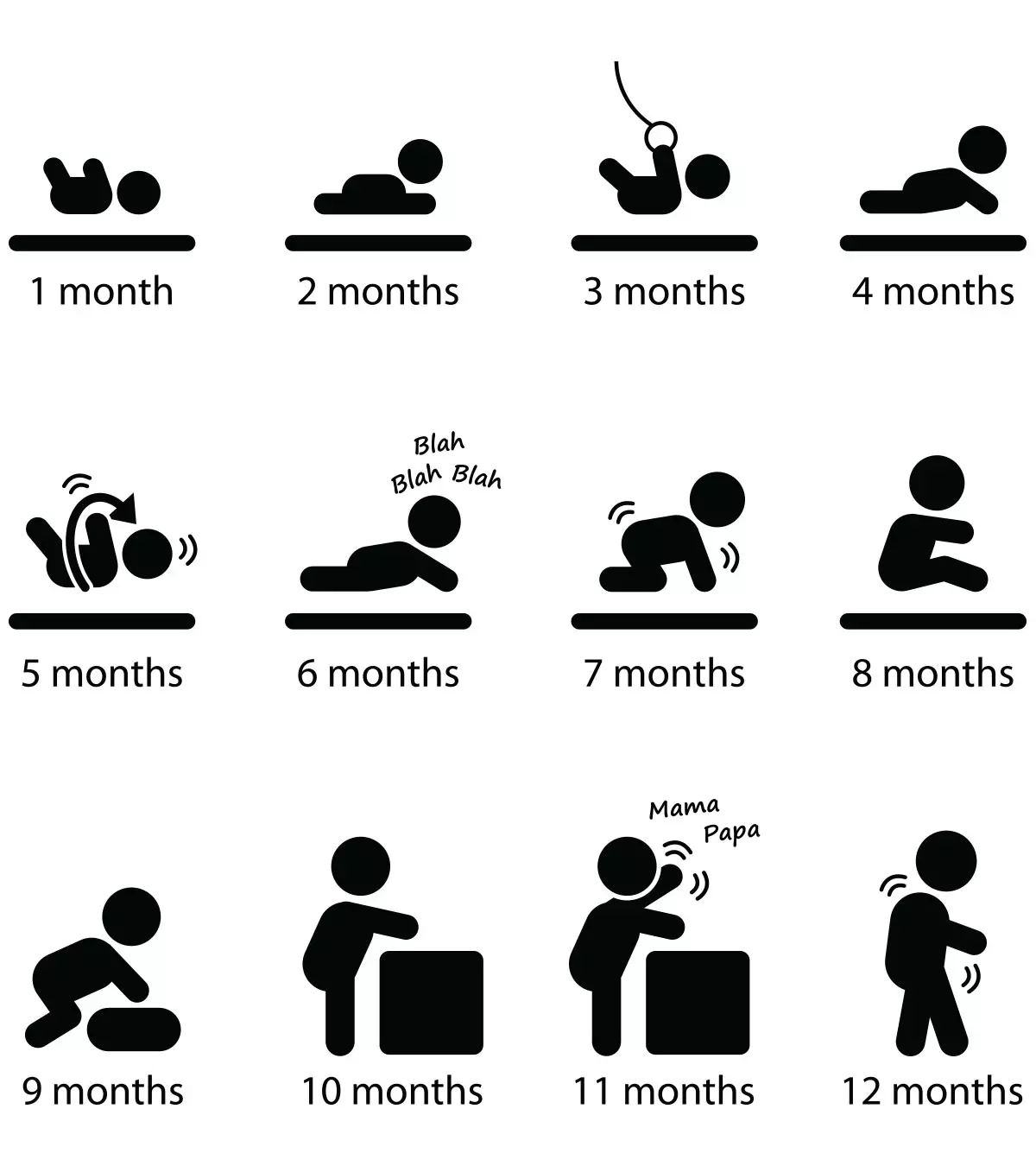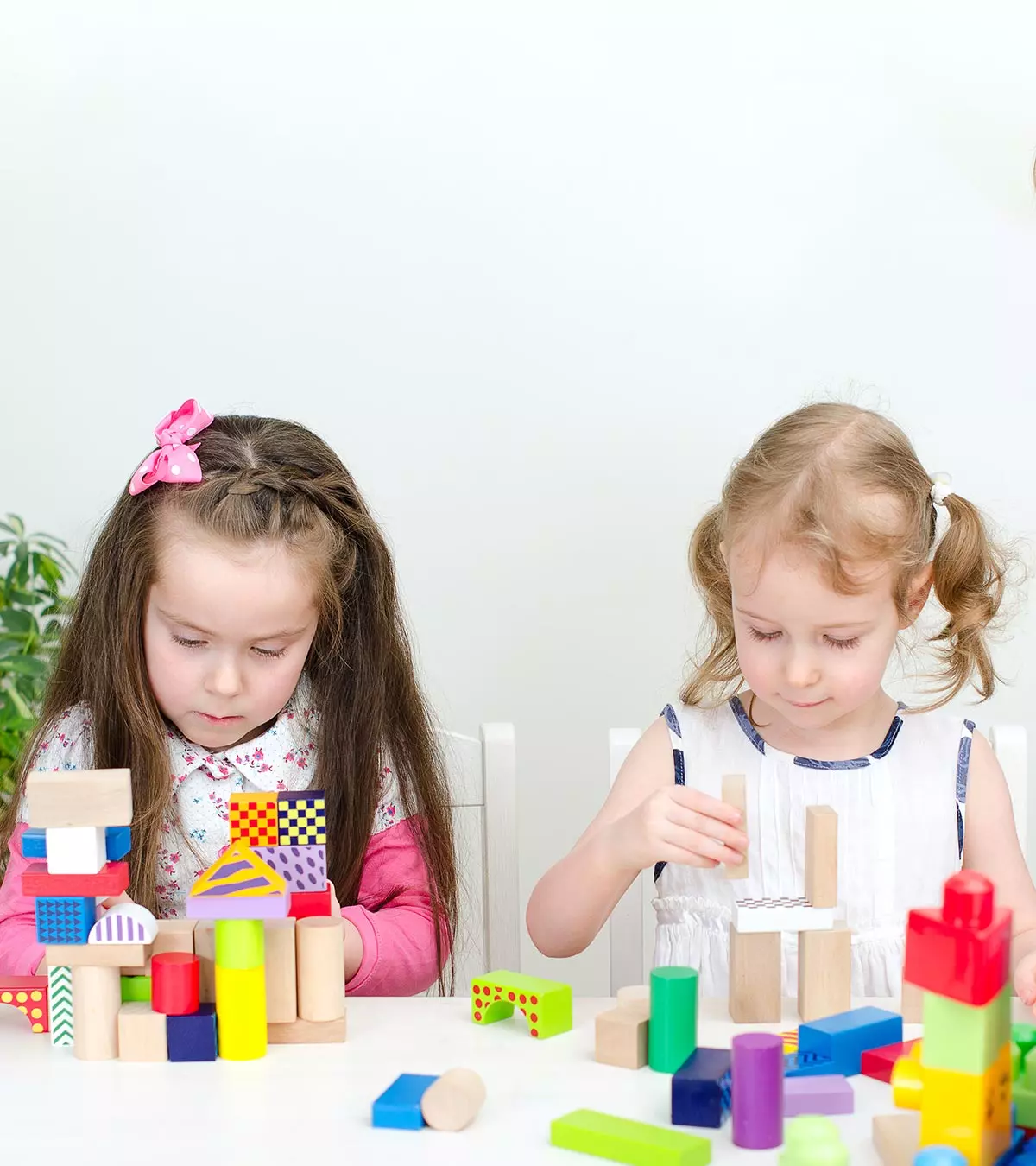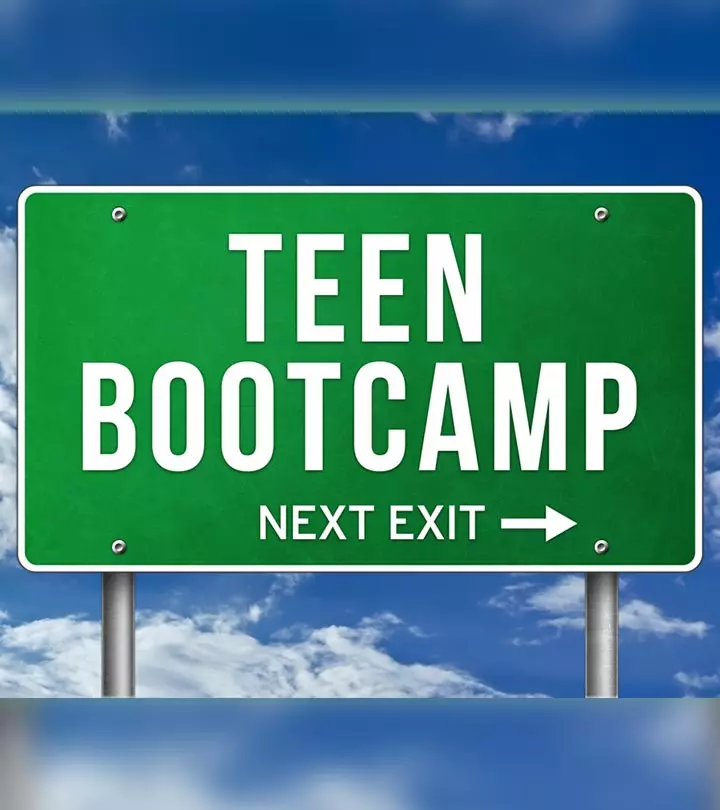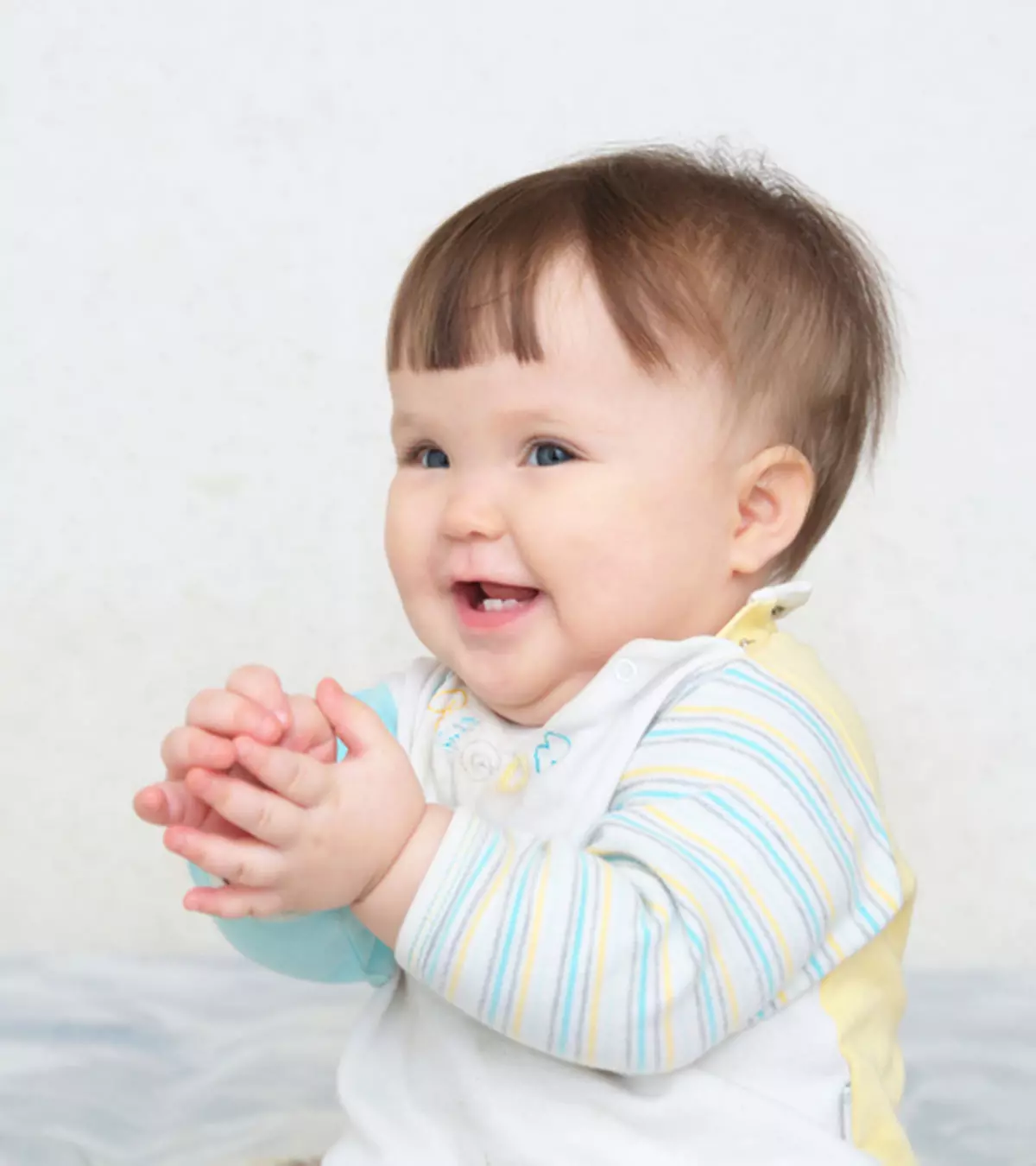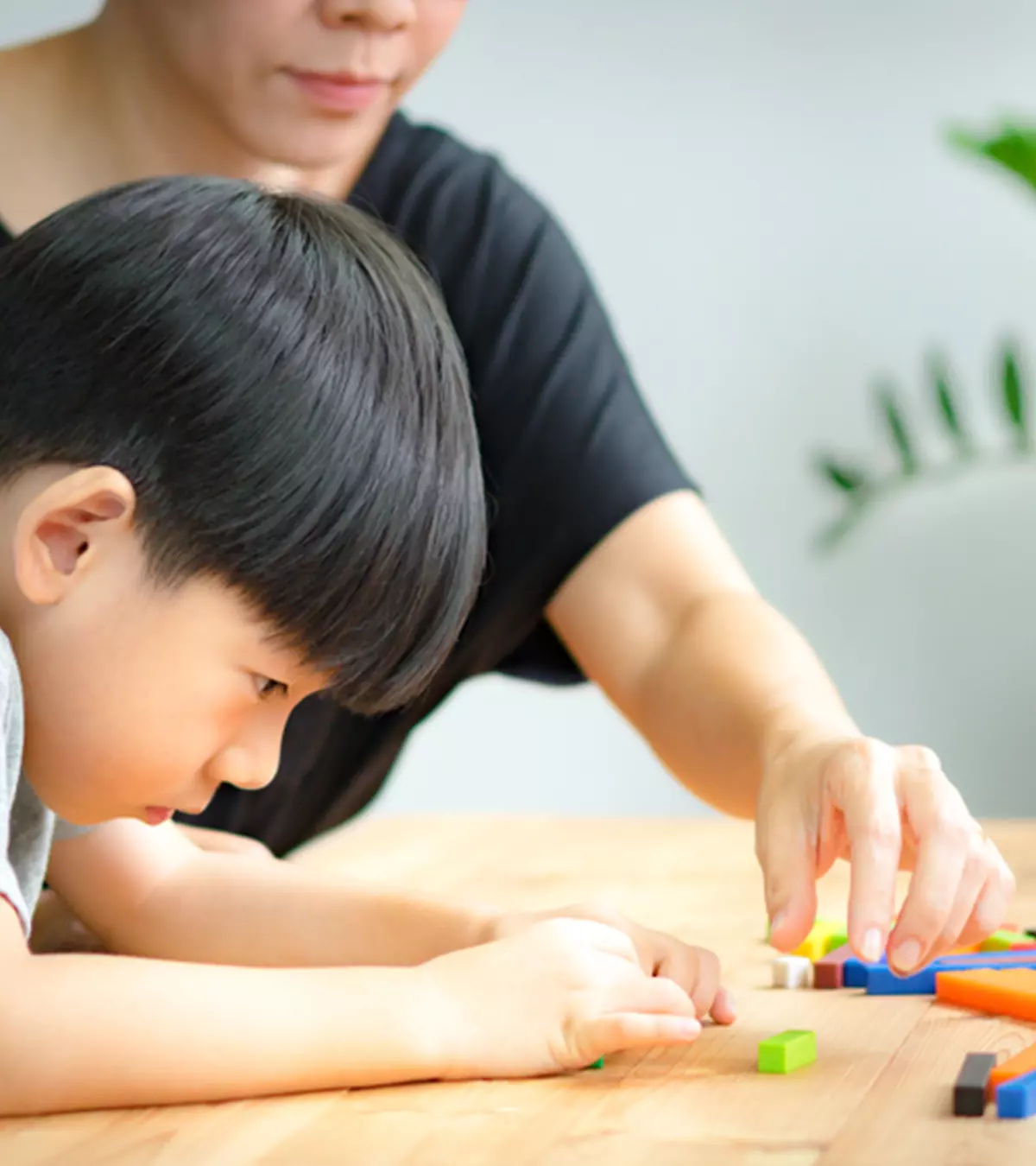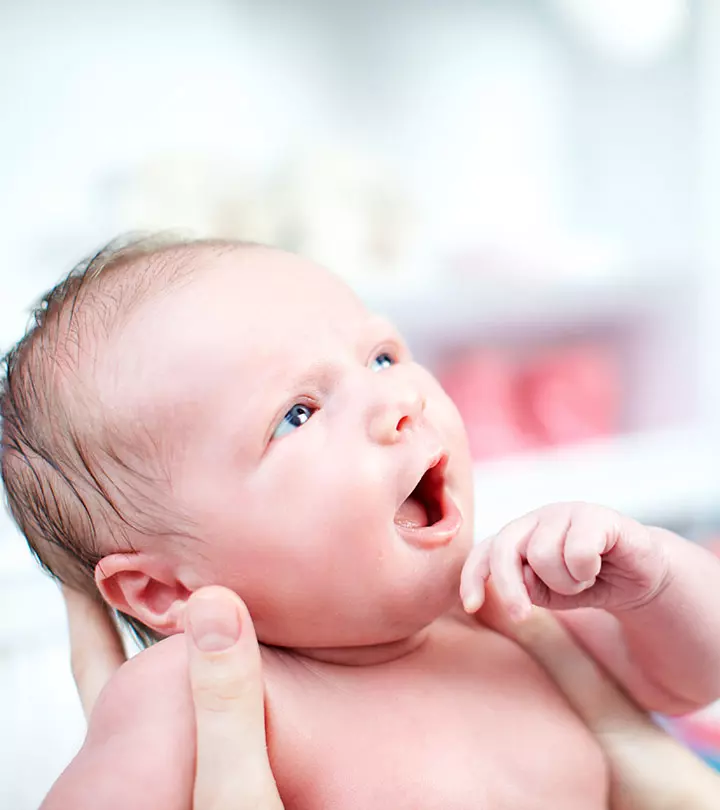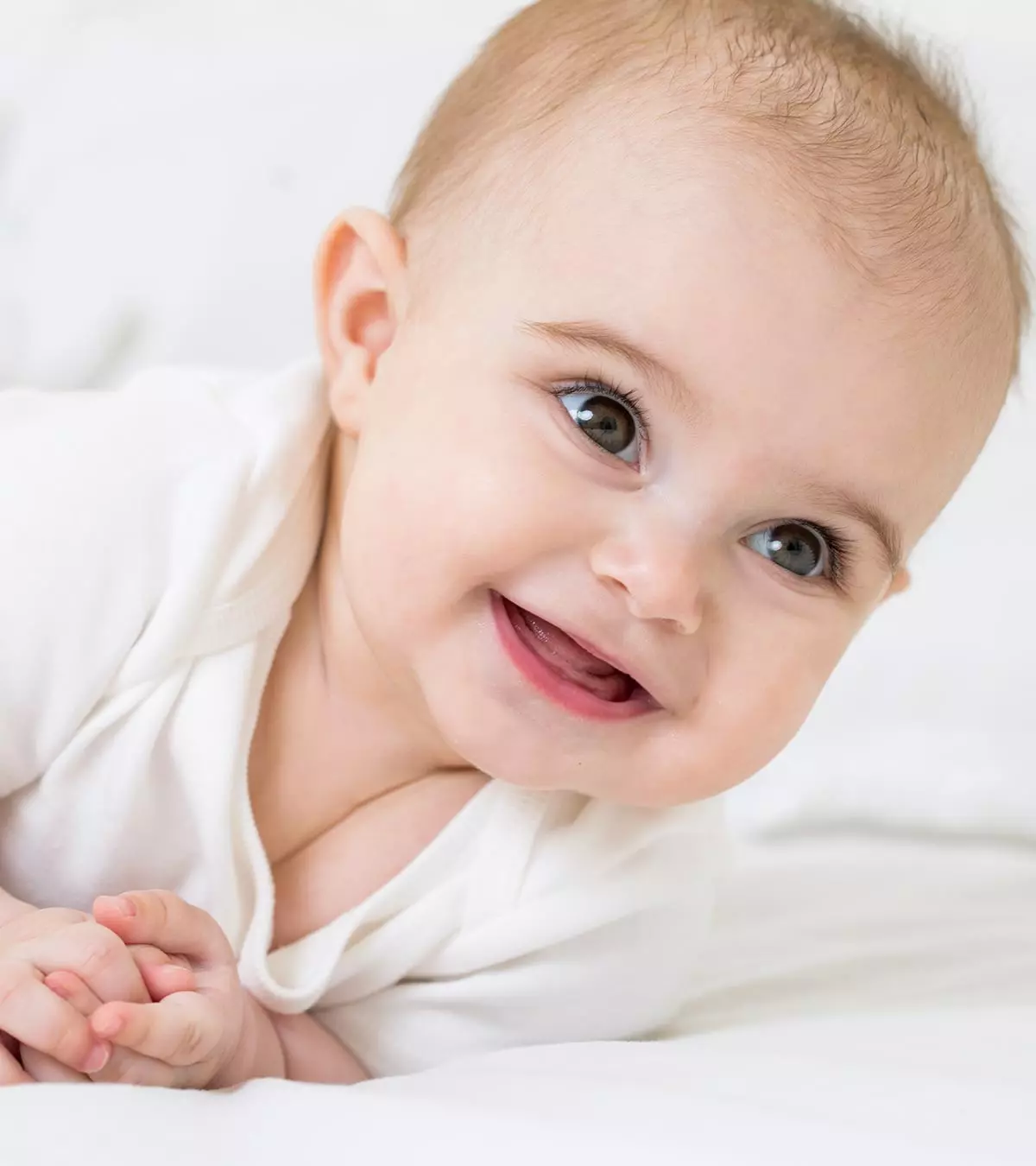
Image: Shutterstock
As you watch your baby grow, the days are full of surprises. If you look at your 7-month-old baby’s development, you’ll notice that they can now finally understand the meaning of “no” and turn their heads when you call their name. This may sound insignificant, but this is a major milestone for parents.
Keep reading if you’re wondering about what else your seven-month-old baby will achieve in terms of various developmental milestones.
Key Pointers
- The developmental milestones of babies at seven months include cognitive, physical, social, and emotional development.
- Cognitive development milestones include exploring objects with their hands and mouth, understanding mirror images, differentiating between tones, and so on.
- Physical development milestones include supporting weight on their legs, two-way rolling, sitting without support, and feeding themselves with finger food.
- Babies at this age have strong object permanence skills and a better memory of cause and effect.
- They can also react to emotions, respond to their name, and engage in social play.
7-Month-Old’s Milestones Chart
| Achieved developmental milestones (1) | Emerging developmental milestones |
|---|---|
| Uses voice to express emotions | Will make simple consonant sounds |
| Understands “no” | Will understand simple one-word instructions |
| Discovers partially hidden objects | Can uncover completely hidden objects |
| Develops raking grasp | Develop pincer grasp |
| Responds to their name | Will remember names of a few objects such as toys |
| Bears weight on arms during tummy time | Attempt lifting body with arms during tummy time |
| Tests cause and effect | Will remember the results of some actions |
| Identifies tones of voices | Remember more tones and recollect more voices |
| Has better depth perception | Improved ability to judge distances |
| Explores objects with hands and mouth | Use hands more often to manipulate objects |
The table gives you an insight into the milestones in a baby’s first year. And the following section gives you a detailed understanding of the baby’s milestones at seven months. However, bear in mind that each milestone has a range of ages in which it is supposed to be achieved and that is normal.
Seven-Month-Old Baby Developmental Milestones
A baby’s developmental milestones are gauged under three categories — cognitive, physical, and social and emotional. Specific skill achievement in each category shapes the overall development of the seven-month-old.
Cognitive developmental milestones
These milestones are all about a seven-month-old’s brain development, cognitive functions, and thinking process.
- Discovers partially hidden objects: Slide a toy under the blanket with a part of it visible. The seven-month-old would unravel it in a matter of seconds. Babies at this age understand that a partially visible item can be acquired as a whole if the object hiding it is moved or removed.
- Explores objects with hands and mouth: Every new object is carefully manipulated in the hands, and it then goes straight into the mouth. That is the seven-month-old’s way of familiarizing themself with anything that is new and unfamiliar. This sensory exploration is a way of addressing their curiosity and also aids in developing hand-eye coordination and other fine motor skills.
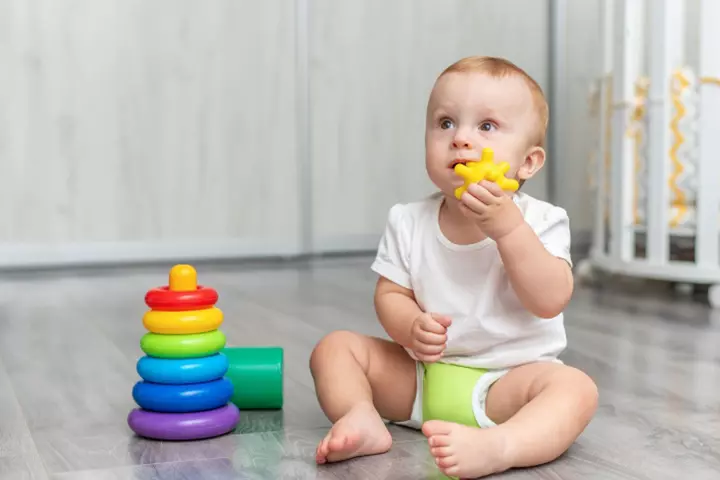
- Understands mirror images: Looking into the mirror is a favorite pastime for the baby now. It is because the infant can now interpret reflections and is aware that the image in the mirror is that of him.
- Differentiates between tones: Parents feel that their baby has become more responsive to instructions. This could primarily be due to the seven-month-old’s ability to differentiate between multiple tones. A sentence or an instruction said in different tones would elicit different responses from the baby. For instance, when the baby cries, ask him “What do you want?”, angrily and see how his cries would turn louder. Similarly, saying it softly can soothe the infant.
- Strong object permanence skills: Gone are the days when the baby would assume that something hidden is gone forever. He now has stronger object permanence skill (2). It means if something goes out of sight, it does not disappear, rather it is just out of the field of vision. Therefore, if a parent goes into another room, a baby will keep looking at the doorway. He knows that the parent would come back from the same door and that they are not gone forever.
- Better memory of cause and effect: A seven-month-old remembers the after-effect or result of an action. He knows that if he throws a toy down a crib, a parent is going to pick it up, and hitting different objects gives unique sounds. The baby will experiment with these effects and memorize a significant number of them to try them out later.
Physical development milestones
These are achievements in physical growth and the various abilities of the body’s muscles.
- Supports weight on legs: Hold the baby on his legs, and unlike earlier when his feet would curve, he now supports body weight on his feet. He cannot stand though, and you will have to hold him by his arms. Nevertheless, his legs and hips display significant development with their ability to bear body weight. Some babies may even start crawling when they are around seven months old.
- Rolls in both ways: Your seven-month-old will display two-way rolling that is, from the tummy to the back, and vice-versa.
- Sits without the support of hands: Babies can sit without support at the age of six months, but will still place hands on the ground to bear weight partially. At the end of seven months, the little one will sit without using hands for support. The back muscles are strong enough to support the body without any assistance.
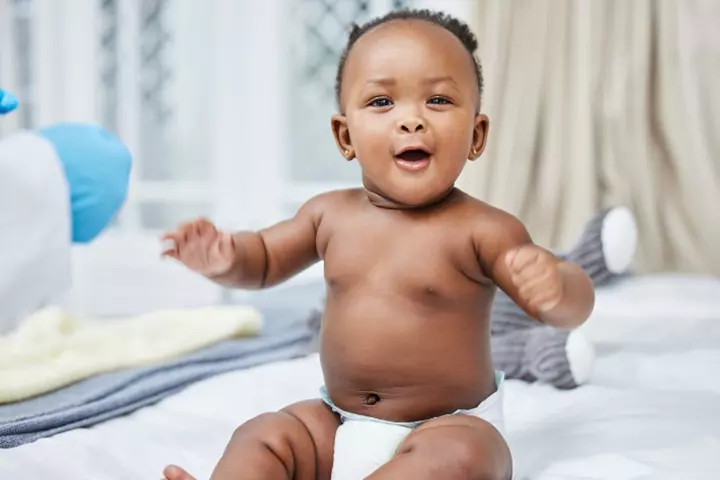
- Can have finger food: Place a bowl of boiled finger food, and the infant would hold it and put it right into his mouth. The seven-month-old can now feed himself with ease (3).
- Uses raking grasp: The baby will use all the fingers and the thumb to pick up objects from the ground or any other flat surface. The seven-month-old’s hands are nimble enough to perform this feat. Such a hold is called the raking grasp.
- Fully-developed color vision: The development of color vision is complete, and the baby’s eyes are adept at discerning color gradients just like the eyes of adults. The seven-month-old infant also has better depth and space perception (4). It means he can see objects at a distance better than he could earlier.
 Quick tip
Quick tipSocial and emotional developmental milestones
Did you know a seven-month-old also displays progress in social skills? This section is all about a baby’s social achievements and landmarks in emotional temperament.
- Uses voice to express emotion: Voice becomes an innate attribute of a seven-month-old’s behavior. So, if they are frustrated, they will grumble in a tone different from the one used when tired. The little one also begins to respond to voices with their voice as if trying to have a conversation.
- Reacts to parents’ emotions: The baby smiles when they see a parent laughing and would cry if the parent appears panicked. A seven-month-old begins to accurately interpret the facial expression of those around, especially primary caregivers such as parents.

- Understands “no”: Parents are amazed by the baby’s reaction to a stern “no”. Every time you use the word to dissuade the baby from doing something, they respond by stopping halfway and perhaps looking at you with a serious expression.
- Responds to their name: At the age of seven months, infants grasp the name that is repeatedly used to address them, eventually learning to respond to it.
- Enjoys playing in a group: The baby would love the attention he gets when seated in a group of people. Engaging in social play becomes one of their favorite activities. For this reason, the seven-month-old enjoys playing with siblings and grandparents more than ever.
Vedran Leder, mother of baby Lea, highlights the significant developmental strides observed in the seventh month. She shares, “This month we really started to notice her emotional development. Her personality is becoming more prominent. She shrieks with joy on her favorite songs and activities. When she doesn’t like something, she makes a grumpy face and stomps her little legs. She started to be wary of strangers and unfamiliar places. And clearly shows when she wants to be picked up. All these are clear signs of growing social and emotional skills (i).”
This was Lea’s development; however, it should be noted that each baby is different and may take more time than others to display a milestone. Don’t panic if there is a slight delay in a single milestone if other activities are done normally.
When To Be Concerned?
Watch for these signs of delayed development in a seven-month-old:
- Does not sit: Typically babies are good at sitting up at seven months. If the baby is unable to sit, then it could be a sign of a delay in physical development.
- Does not modulate voice: The baby would use voice as a tool and a medium to express emotions. If they are unable to do so, then it is a reason for worry.
- No response to sounds: The seven-month-old is a better listener than before. Not reacting to voices and sounds around could be an indicator of troubled hearing.
- Appears lost when looking around: They do not acknowledge a toy or food placed in front of them, do not smile back at the parent, and seem to have trouble focusing on objects.
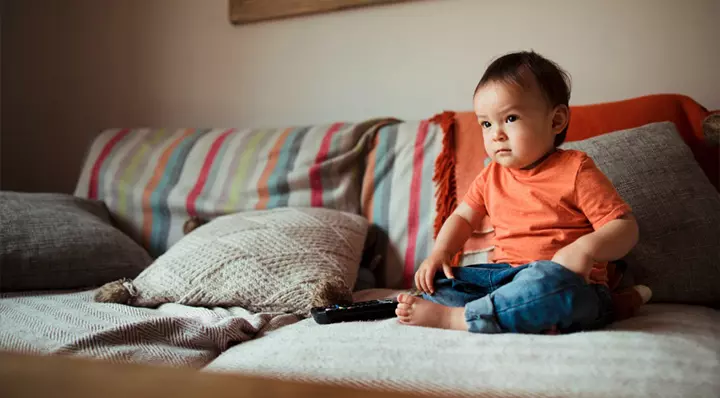
- Does not bring the hand to the mouth: It is an action imperative to feed oneself. Inability to bring the hand to the mouth adversely affects the baby’s ability to gain nutrition.
- Has stiff or floppy body: When you place the baby on their back or tummy, their limbs seem unusually stiff. On picking up the baby, their head and torso droop backward in a floppy way.
Consult a pediatrician for a formal assessment and eventual diagnosis of any developmental delay. The American Academy of Pediatrics recommends getting a baby checked by a doctor periodically for a timely detection of any developmental delay (5).
Parents can always play their part in supporting the baby to grow healthily.
 Point to consider
Point to considerHow Can Parents Improve The Development Of A Seven-Month-Old?
Here some easy ways to help your seven-month-old grow better:
- Have adequate tummy time: Tummy time is a single most important activity to boost a baby’s muscle growth (6). Make the little one spend ample time on his tummy. Have tummy time at least thrice a day with a minimum of five minutes per session. If the baby gets on the tummy by himself to play, then it is good.
- Play baby sit-ups: Hold the baby in a vertical position, and make them do assisted sit-ups. It will not just strengthen his leg muscles, but will also make the spine muscles stronger. It is also a good way to improve the efficiency of the joints of the knee and the hips.
 Quick tip
Quick tip- Encourage self-feeding: Place the baby’s food in front of them and let them feed while you stay on the watch. Self-feeding is an essential skill that can be enhanced with constant practice. It helps the baby limit the feed to meet his hunger, just as adults do.

- Spend time in social play: Playing with groups of family and friends is an excellent way to develop the baby’s social skills and cut down the levels of social anxiety, which is also a great way of addressing their separation anxiety.
- Select toys that develop skills: A baby at seven months displays several skills. For instance, he can perform a raking grasp. Choose a toy that stimulates such skills and helps them develop further. You can explore more activities for 7-month-old babies to encourage further development.
Frequently Asked Questions
1. How many words should a 7-month-old say?
At 7 months, your baby may start babbling, make noises, and mostly use body language to communicate. However, early talkers may say one or two words such as ‘mama’ or ‘dada’ (7). This early phase is a crucial part of language development in babies.
2. How much solid food should my 7-month-old be eating?
You may feed them half a cup of soft food twice or thrice daily, taking into account their physical development, including the process of teething. However, you should continue to give your baby the same amount of breastmilk with increasing amounts of solid foods (8).
3. What can I give my 7-month-old baby for breakfast?
7-month-olds should be given pureed and mashed food to prevent choking. For breakfast, they may have mashed fruits (e.g., cooked pears/apple, ripe banana), well-cooked iron-enriched rice cereal, multi-vegetable puree, or cooked and mashed lentils (9). For more information, you can explore the 7-month-old baby’s food chart.
4. Can a 7-month-old baby sleep with a blanket?
Using a blanket while sleeping is not recommended for infants as it can pose a risk of suffocation and overheating, which can also result in disturbances to their sleep patterns (10).
5. What is the 7-month-old baby’s sleep pattern and the recommended amount of sleep for infants at this age?
Infants aged 4 to 12 months are recommended to sleep between 12 to 16 hours per day, encompassing both daytime naps and nighttime sleep. Around the age of six months, most babies tend to have their longest periods of sleep during the night (11). A 7-month-old baby’s sleep schedule, at this stage, starts resembling those of adults, leading to fewer nighttime awakenings. Consequently, your baby might not frequently wake during the night, or such episodes may occur less frequently. However, it’s important to note that some babies still experience nighttime awakenings, requiring adult assistance to settle back to sleep. This can occur three to four times a night for certain infants (12).
Your baby can now understand the tone of your voice, respond to their name, sit without support, and experiment with finger foods. Parents can help improve their 7-month-old baby’s development through simple techniques such as facilitating tummy time, self-feeding, choosing the right toys, and encouraging social interactions. It’s important to be patient with infants as they have different rates of developing skills such as language and gross motor skills. However, when you feel your baby is not achieving important milestones at the right time, talk to a doctor without hesitation.
Infographic: How To Improve The Development Of A Seven-Month-Old Baby?
The seventh month of a baby is an exciting time for both you and your baby, as, during this time, you can introduce new foods into your baby’s diet while your baby continues to explore their surroundings. The infographic below provides a few useful methods you can try to help your baby’s development at this age.

Illustration: Momjunction Design Team
Illustration: 7-Month-Old Baby Milestones Physical Development And Growth
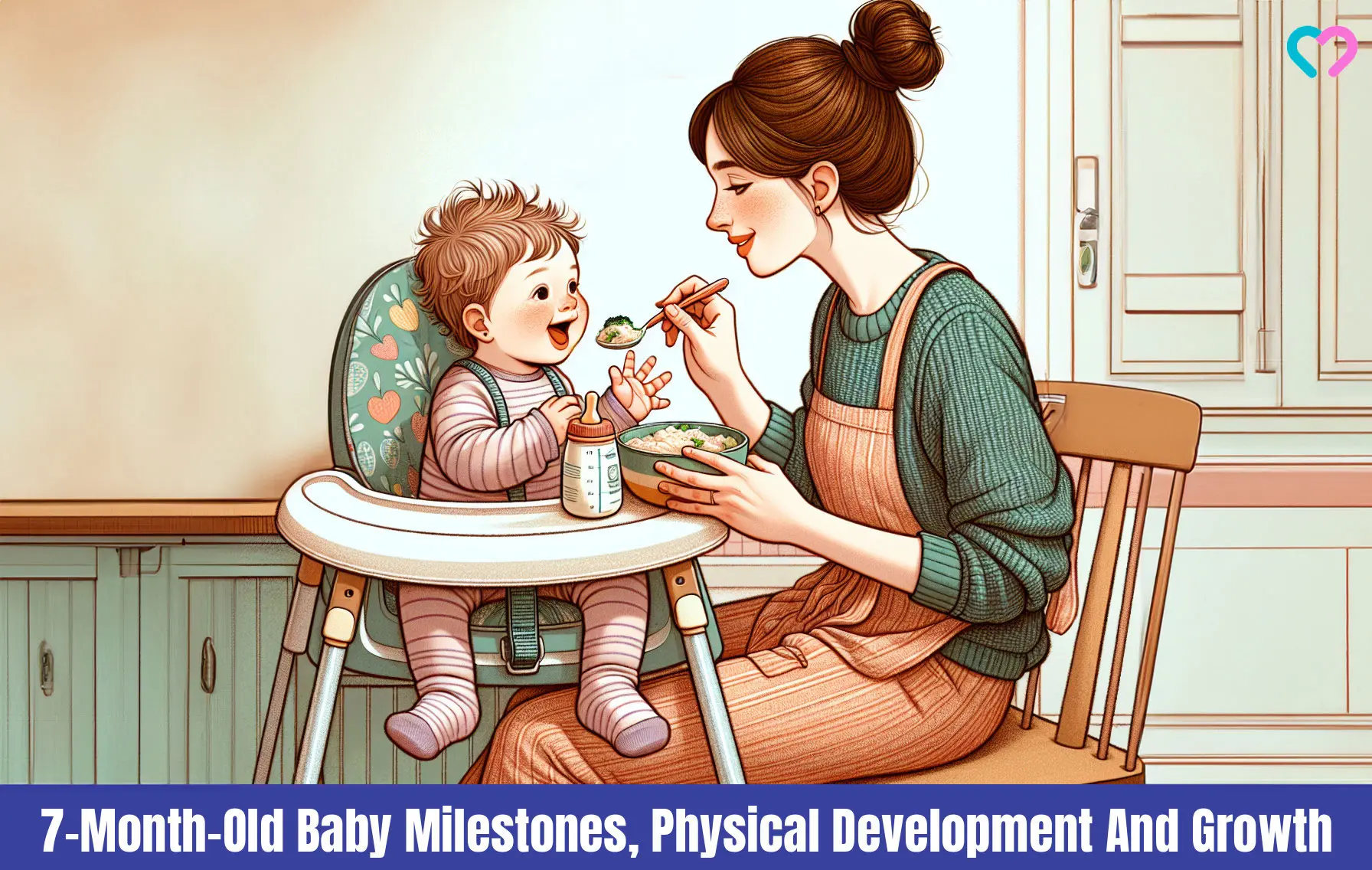
Image: Dall·E/MomJunction Design Team
Personal Experience: Source
MomJunction articles include first-hand experiences to provide you with better insights through real-life narratives. Here are the sources of personal accounts referenced in this article.
i. What to expect from the baby in the seventh month.https://medium.com/stem-little-explorers/what-to-expect-from-the-baby-in-the-seventh-month-c540779a29ad
References
- Developmental milestones: 7 months.
https://www.healthychildren.org/English/ages-stages/baby/Pages/Developmental-Milestones-7-Months.aspx - Cognitive Development: 4-7 months.
https://www.healthychildren.org/English/ages-stages/baby/Pages/Cognitive-Development-4-to-7-Months.aspx - What to feed your baby (7-9 months).
https://www.nhs.uk/start-for-life/baby/weaning/what-to-feed-your-baby/7-to-9-months/ - First year infant development.
https://americanpregnancy.org/healthy-pregnancy/first-year-of-life/first-year-infant-development/ - Important milestones: Your baby by six months.
https://www.cdc.gov/ncbddd/actearly/milestones/milestones-6mo.html - Back to sleep Tummy to play.
https://www.healthychildren.org/English/ages-stages/baby/sleep/Pages/Back-to-Sleep-Tummy-to-Play.aspx - 7-8 months: baby development.
https://raisingchildren.net.au/babies/development/development-tracker-3-12-months/7-8-months# - Feeding your baby: 6–12 months.
https://www.unicef.org/parenting/food-nutrition/feeding-your-baby-6-12-months - Nutrition: 6-8 months.
https://www.tresillian.org.au/baby/feeding/ - Helping Babies Sleep Safely.
https://www.cdc.gov/reproductive-health/features/babies-sleep.html?CDC_AAref_Val=https://www.cdc.gov/reproductivehealth/features/baby-safe-sleep/index.html - Sleep in Your Baby’s First Year
https://my.clevelandclinic.org/health/articles/14300-sleep-in-your-babys-first-year - Baby sleep: 2-12 months.
https://raisingchildren.net.au/babies/sleep/understanding-sleep/sleep-2-12-months - 14 Tips for baby proofing your home.
https://pathways.org/baby-proofing-14-tips-home/ - Pregnancy, birth and baby.
https://www.pregnancybirthbaby.org.au/babys-growth-and-development-7-months-old
Community Experiences
Join the conversation and become a part of our nurturing community! Share your stories, experiences, and insights to connect with fellow parents.
Read full bio of Dr. Shashidhar A
Read full bio of Rohit Garoo
Read full bio of Dr. Ritika Shah
Read full bio of Vibha Navarathna








